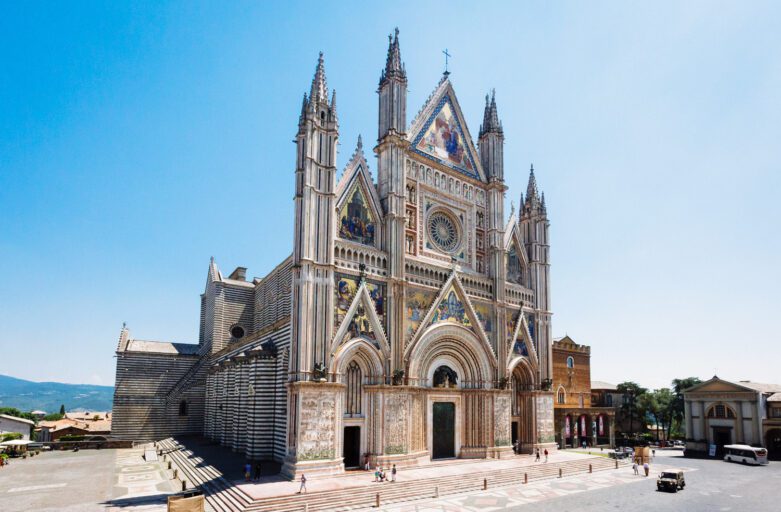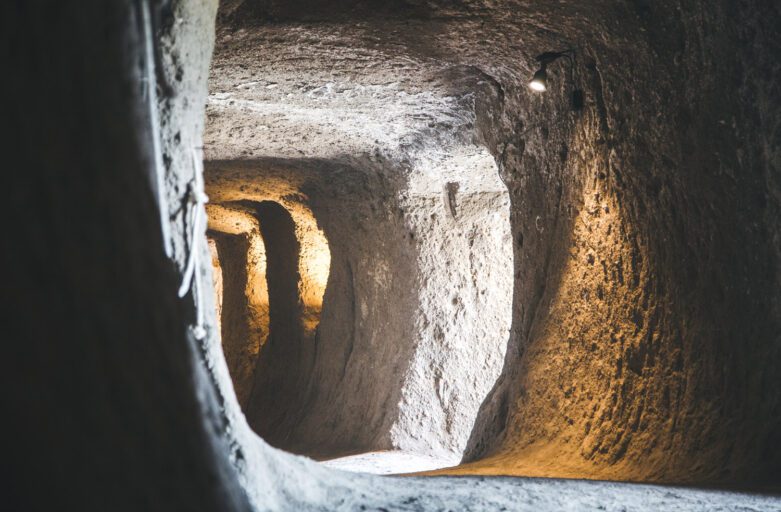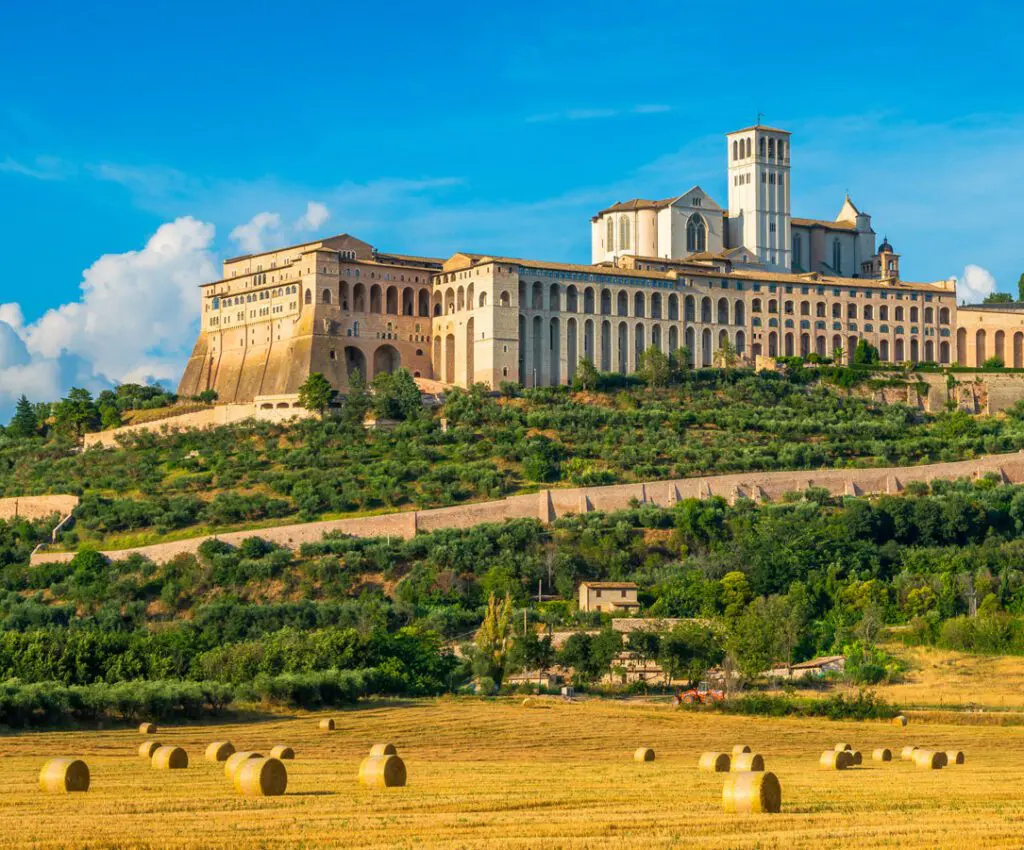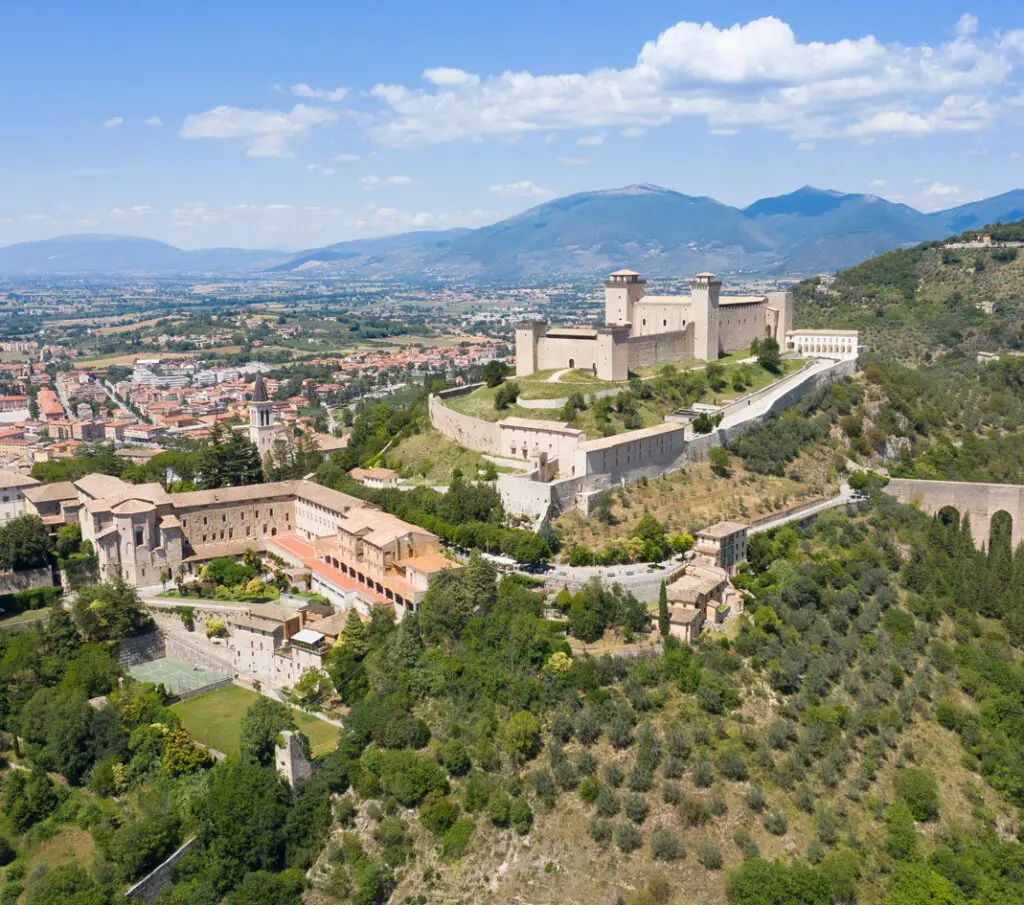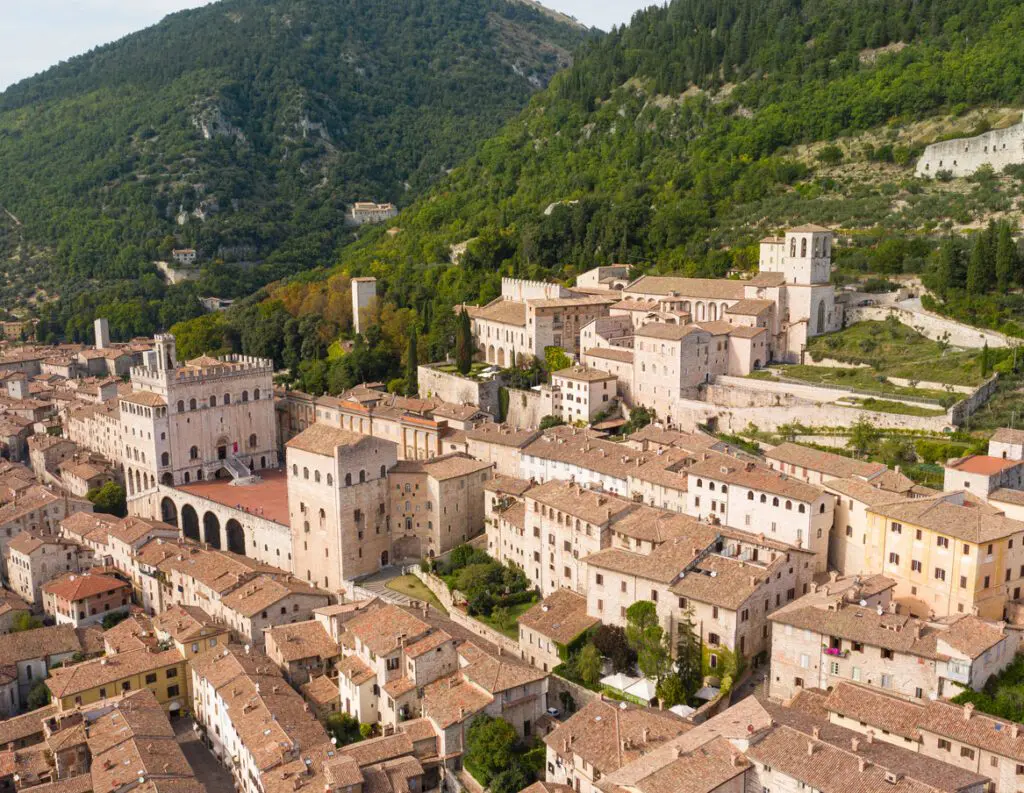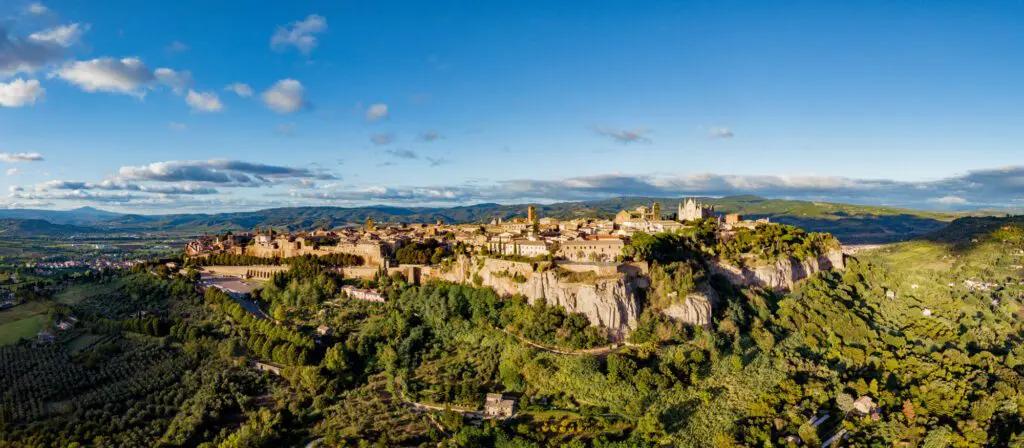The Tower
A Central Role in the Town
The Medieval tower is among the buildings that stand out in Orvieto's skyline, together with the imposing Cathedral. The tower will remain conspicuous even if you walk in the town streets – it would be impossible not to note this building, some 50 meters (150 feet) high, which dominates all others not only because of its dimensions, but also because of its central role in the city planning. The tower is the very center, starting from which the four town quarters – Corsiva, Olmo, Serancia, Stella – are distinguished. With reference to this, its sides are oriented according to the cardinal points. Its position also makes it the Civil Tower. What does it mean? What makes it different from a belfry or a tower-house? Like all true civil towers, this has bells that marked the most important occasions in town life. Only in a later epoch did it begin to house a clock too.

Its Name in the Course of History
The name by which the tower was called changed during the centuries as a consequence of the changes in its role, both symbolically and functionally. The tower was built by decision of an important family in Orvieto, the Della Terza Counts, after whom it was originally named. Later in history, it passed from private home to Papal property, and was therefore renamed “the Pope's Tower.” In the 16th century Pope Leo X (1475 - 1521) ceded it to the Town Hall, and from then on it has been known as Torre del Moro. The reason is not yet clear, only conjectures can be made. Moro might mean “Moor,” but, according to the main hypothesis, the name is linked with some Raffaele di Sante, of whom Moro was a nickname – in Italian, moro often indicates a dark-haired man.
The Tower and Its Building: Palace of the Sevene
The tower is directly connected with Palazzo dei Sette, “Palace of the Seven.” Both buildings were the icons of the political and economical freedom the town enjoyed in the 13th and 14th centuries. The palace was headquarters to the Seven Lords (Signori Sette), the leaders of the Arti in Orvieto. Arti, literally “Arts,” has nothing to do with painting or sculpting in this case. They were corporazioni, guilds, associations of professionals like merchants or craftsmen, who gathered by category, shared the same rules, and collaborated in their business.
The Arti began when Orvieto became a free Commune, that is, when the town started to have an independent government. There issued ad-hoc institutions to rule the town. This new political structure changed the organization of urban space; the Palace of the Podestà (mayor; 1216-1219) and the People's Palace (13th century) were also built.
In such a period of wealth and freedom, however, there was the other side of the coin: fights between the most important noble families, who struggled for power. Violent, bloody clashes involved especially the Monaldeschi e Filippeschi clans. They would be recalled by no less than Dante in the Divine Comedy: “Come and behold Montecchi and Cappelletti, / Monaldi and Fillippeschi, careless man! [the Emperor] / Those sad already, and these doubt-depressed!” (Purgatorio, 6.106-8). These words are uttered in the “Anti-Purgatory” at the foot of the mountain of Purgatory, where Dante is surrounded by souls of people who died a violent death. The poet expresses his sadness for all pains caused by “careless” men, and without honor. Intestine fights were actually widespread throughout Italian Communes then, not only Orvieto. The three lines from the Divine Comedy are quoted in an inscription on Moro's Tower – while “Montecchi and Cappelletti” will play the role of the rival families in Shakespeare's Romeo and Juliet.

Orvieto as a Free Commune: The People's Palace
During the Communal Era, the “people” (here however corresponding to the middle classes) were the center of power, not any Lord who controlled and commanded from the top. Freedom needed new spaces to be fully enjoyed; it was necessary to have a building where communal liberties may thrive – that is why Palazzo del Popolo, the People's Palace, was built. It was first mentioned in a document in 1281.
The building was, again, made in the local stone, tuff. It is an icon of civil architecture: in the lower section, see the arches, and in the upper part the trifore, three-lobed windows embellished with frames. Inside, the great hall was called Sala dei Quattrocento, “of the Four Hundred Men.” There only remain parts of the frescoes, a set of paintings that showed the Capitano del popolo (People's Chieftain), the podestà, and Popes, of the 14th - 17th centuries. The People's Chieftain was the head of the People's Council; while the podestà was the top civil authority, and was summoned from off Orvieto, as he could not be a citizen (this was meant to prevent corruption). It was his duty to administer justice, lead the army, as well as exert executive power; but all such roles would be in his hands just for a short period, six months to one year..
Something More about the Tower
You may appreciate the tower not only from the outside while walking in Orvieto's Medieval streets, but also by going up to its top. There, you will see a 1316 bell, decorated with the 24 “Arts,” and even have a look at the clockwork. Truly amazing will be the experience of admiring the whole town and the surrounding landscape from the tower's top.


INFO
Place
Via Volsinia, 05018 Orvieto TR
Schedule
November - February
10:00 - 15:30 (latest entrance)
March - April/ September - October
10:00 - 18:00 (latest entrance)
May - August
10:00 - 18:30 (latest entrance)
Tickets
Adult 3,8€
Kid 3€
Under10 Gratis
Contatti
Email: info@genesiagency.it
